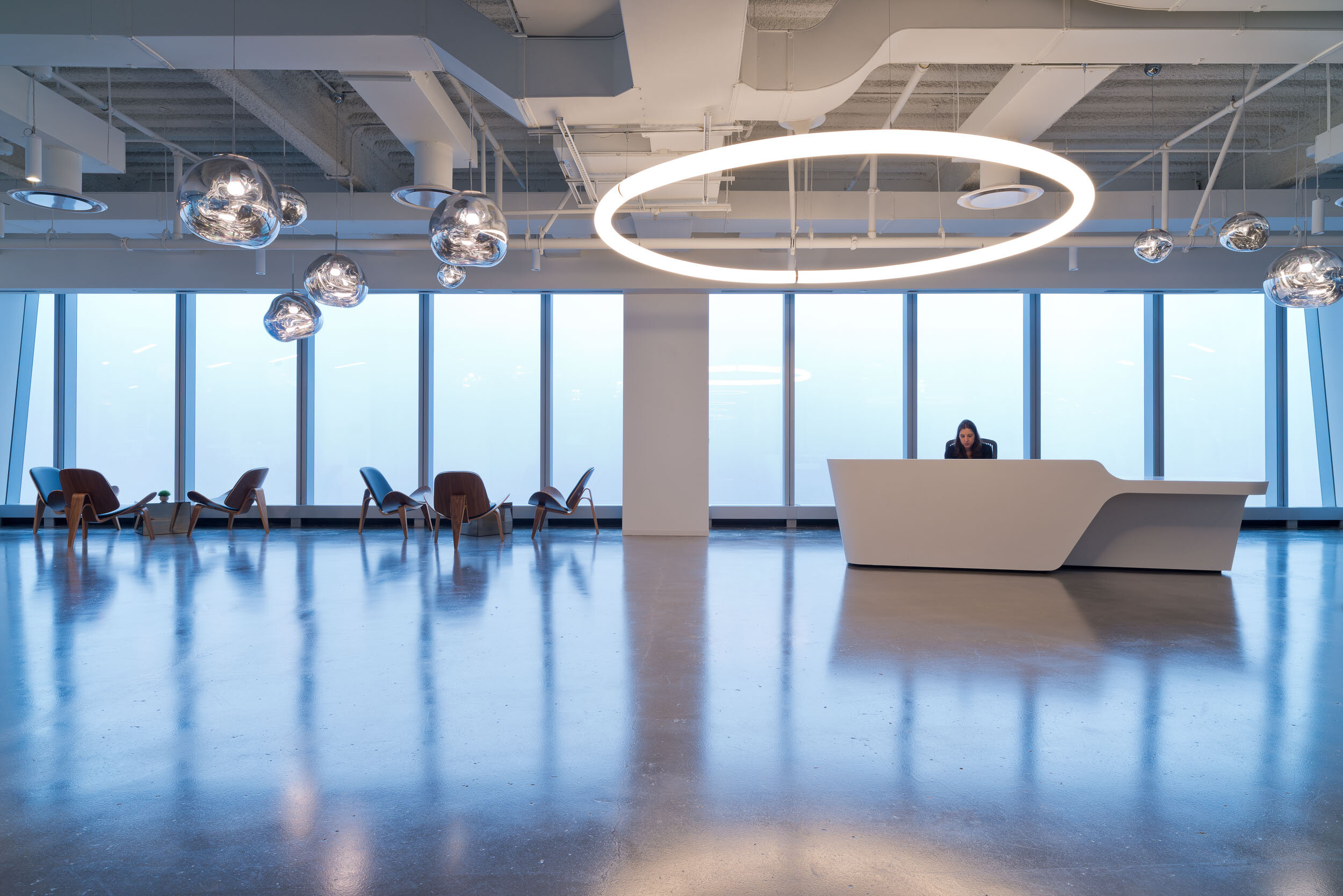The Importance of WELL Building Standard In Workplace Post-COVID
The WELL Standard and the COVID-19 Workplace
No one could have ever predicted that the COVID-19 pandemic would shut down the world for months and change the way we live, work, and interact with each other. Even now we can still only speculate how the future will look post-pandemic, and how social and built environments will be affected in the coming years.
As an Interior Designer, I create spaces that are eye-pleasing and beautiful, but the underlying goal has always been to design an environment for the end-users where they can feel comfortable, productive, and inspired. The pandemic has emphasized another very crucial aspect, something we don’t always prioritize during the design process, the importance of occupant’s wellbeing, health, and safety. COVID-19’s effect on design and architecture will likely be dramatic, changing how we plan and layout spaces for a new normal future. Some modern planning principles such as open-plan offices, hoteling, and co-working shared spaces need to be reevaluated and may no longer be desired by the market post-pandemic.
So, as we look ahead during this global challenge, it’s important to have a framework, such as the WELL Standard to guide us through rethinking our surroundings and environment at home, work, and places we visit.
What Is The WELL Standard?
Whether it’s adapting existing office spaces for a planned return to the workplace, or developing new office standards, WELL Building Standard was developed to give us direction on how to make safe healthy spaces focused on human health and wellbeing:
“It marries best practices in design and construction with evidence-based medical and scientific research – harnessing the built environment as a vehicle to support human health and well-being.” [Delos Living]
Personally, the WELL Standard resonated as a natural match to the impact of the global pandemic and inspired me to actively study to become a WELL AP. I believe designing with the founding principles of WELL is becoming a necessity, and will increasingly be an expectation of our clients.
This is what I learned…
The program was designed to empower owners and operators across large and small businesses as well as residential developers alike to prioritize the health of staff, tenants, visitors, and stakeholders. Now more than ever the Standard is being implemented in the Retail, Hospitality, and Education sectors.
WELL has also developed the Health-Safety Rating - a proof-based third-party tested rating system for all new and existing building and interior space types. It focuses on functioning policies, maintenance protocols, and emergency plans, to help organizations prepare spaces for re-entry in response to COVID-19 as well as modification of the post-pandemic environments.
The International WELL Building Institute™ (IWBI™) is a global movement that established a set of key elements to transform buildings and promote human comfort and health. The rating system called WELL Building Standard was launched in 2014 and it was backed by years of scientific and medical research as well as behavioral and environmental literature and peer reviews.
WELL AP certification is administered by IWBI in collaboration with Green Business Certification Inc. (GBCI) which is also aligned with the Leadership in Energy & Environmental Design (LEED) rating system
WELLv1 is currently the only version that is used for certifications and it is based on 7 concepts: Air, Water, Nourishment, Light, Fitness, Comfort and Mind
The system is performance-based, meaning it’s being tested and measured in the built environment across all 7 factors. Each one of them is directly related to human wellbeing.
follows a similar approach to the LEED rating system; some things are mandatory (Preconditions), and others are optional (Optimizations). Satisfying the preconditions and achieving a threshold level of optimizations earns a project a level of certification (Silver, Gold, or Platinum).
WELL Standard Concepts and their Impact on Human Wellbeing and Health
AIR: Is the first and most important factor. Something we can’t see but also an essential element of life. Humans breathe more than 15,000 liters or 530 cubic feet of air every single day, consuming approximately four times more air than food and liquid together. Determining the quality of the air we breathe is critical to our health.
Historically common indoor air contaminants such as tobacco products, stoves, furnaces, and fireplaces, would release pollutants like carbon monoxide or nitrogen dioxide into the air. In modern spaces pollutant sources are often related to building materials, furnishings, fabrics, paints, cleaning products, personal care products, and even air fresheners, which can all emit volatile organic compounds (VOCs) or semi-volatile organic compounds (SVOCs). Outdoor air pollution can also influence indoor exposure if pollutants migrate indoors through building openings, and mechanical ventilation systems. Polluted air can cause several respiratory issues and also trigger asthma and allergies. The WELL Building Standard helps in improving air quality and minimizing indoor pollution.
Not everyone agrees that COVID-19 can spread via airborne particles. Both the World Health Organization and the Centers for Disease Control and Prevention have said the virus spreads either by inhaling respiratory droplets, or more rarely, touching a contaminated surface and then your eyes, nose, or mouth. Many researchers disagreed and the WHO now says aerosol transmission cannot be ruled out.
To address this issue WELL recommends some solutions such as: reconfiguring HVAC systems to bring in more fresh air to increase the exchange rate and reduce the amount of air recirculation that potentially distributes viral particles; retrofitting high-efficiency air filters like HEPA, or MERV; incorporating air purifiers throughout the space to increase filtering directly adjacent to occupied areas; as well as adding living plants and green walls that are natural air filters.
The use of plants, greenery, and other nature-inspired elements is closely related to another essential feature WELL – Biophilia. Biophilia means: “love of nature” and it focuses on human's attraction to nature. Biophilic designed buildings incorporate things like natural lighting and ventilation, natural landscape features, and other elements for creating a more productive and healthy built environment for people.
This sums up the role and importance of air quality in our surroundings. The further elements of the WELL Standard: Water, Nourishment, Light, Fitness, Comfort, and Mind will be discussed in upcoming blogs.
By: Izabela Marino,WELL AP, GKV Architects

